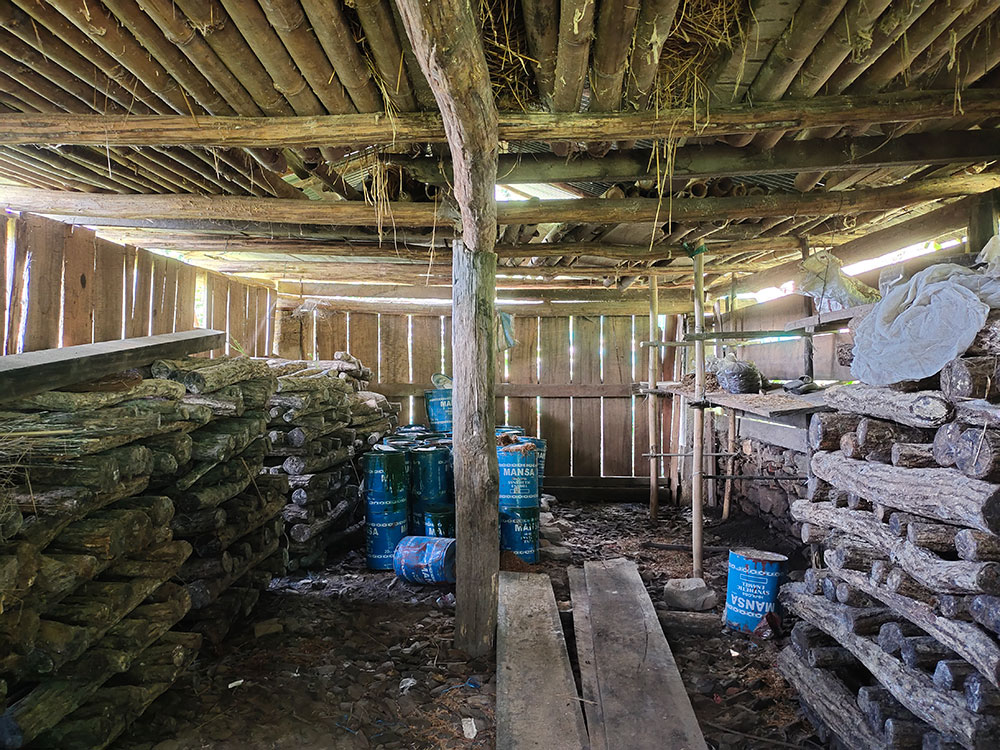Lhakpa Quendren
Farmers of Kikhar in Ngangkor gewog, Zhemgang are disappointed after their attempts to grow Oyster mushrooms failed following the poor Shitake mushroom harvest last year.
Earlier this year, the gewog agriculture officials trained 18 farmers in the village in Oyster mushroom cultivation to see if it could be a profitable crop. However, farmers say none of them could produce enough to market the mushrooms.
Thinley Namgay said that the efforts were not without challenges, given that the Oyster mushroom cultivation did not work out either.
“I have implemented the advice provided by the agriculture officials. I think that our cultivation might have been delayed, which led to some issues,” he said.
He expressed his preference for oyster mushroom cultivation over other farming. “Oyster mushroom farming is a profitable venture which doesn’t demand extensive labour, but provides quick returns. If we have the seedlings, I will continue to grow them.”

Shitake mushroom cultivation results in poor yield
After receiving the training, he ventured into Oyster mushroom cultivation with 80 mushroom spawns. “I managed to harvest four times, and earned Nu 40,000 in just two months.”
Another mushroom farmer, Thinley Wangchuk, 56, began his cultivation with 100 spawns with the ambitious plan to expand his mushroom farm. “It failed to yield good harvest even with the guidance and advice from the agriculture officials.”
He initially ventured into Shitake mushroom cultivation, which did not work despite substantial investment. He said the water shortage has resulted in his farm’s failure. “I have decided not to continue with mushroom cultivation.”
Thinley Wangchuk said the promising business prospects and marketing opportunities encouraged his Shitake mushroom cultivation after a successful initial harvest with 1,000 logs. “Later, I expanded the farm to 3,000 logs, but it did not yield good results after six months.”
Another mushroom farmer said that they had reported the issues to the chiwog tshogpa who then shared it in the telegram group. However, he said, no officials visited during the cultivation process.
Farmers emphasised the need for technical skills and knowledge for year-round production for anyone considering oyster mushroom cultivation. They say such training would also help them up-scaling their farms from self-consumption to commercial farming.
According to the farmers, growing Oyster mushrooms would help them earn more, given that growing Shitake mushroom is a lot more labourious. Pests were the main problem, which caused farmers to lose most of their shitake mushrooms.
Zhemgang’s agriculture official said they received no complaints regarding the issues, instead, the chiwog tshogpa has been updating them about the progress regularly.
However, the official said that mushroom cultivation will be prioritised under a project to build resilient commercial smallholder agriculture (BRECSA). This project supports smallholder agriculture value chains to transform smallholder agriculture into inclusive and resilient agri-food systems that are increasingly profitable, and food-and-nutrition-secure.
In 2021, Bhutan produced 112.25 metric tonnes (MT) of Oyster mushrooms, with Zhemgang contributing 3.71MT of Oyster mushrooms and 3.06MT of Shitake mushrooms. In 2020, Zhemgang produced 3.78MT of Oyster mushrooms and 1.20MT of shitake mushrooms.


